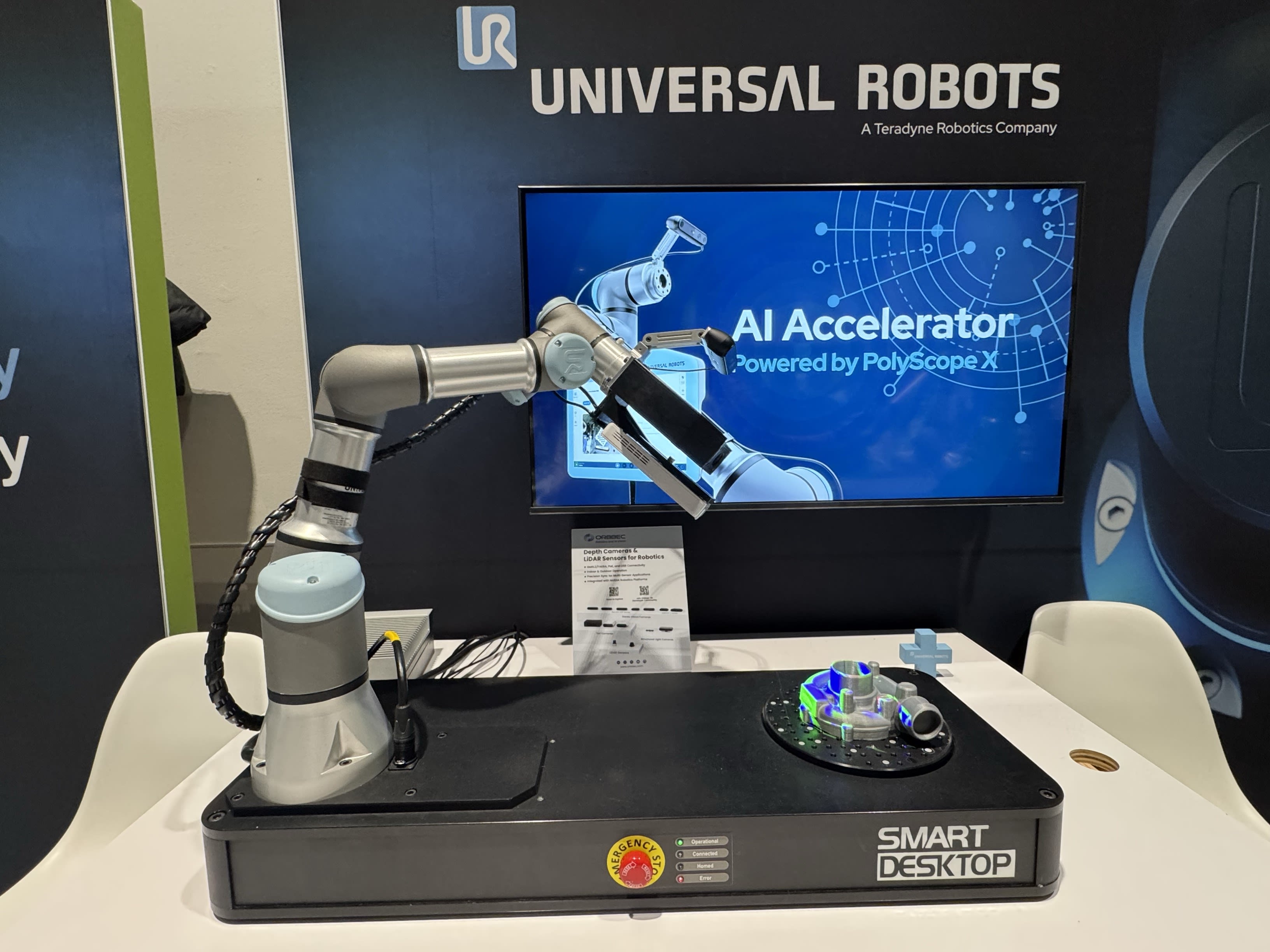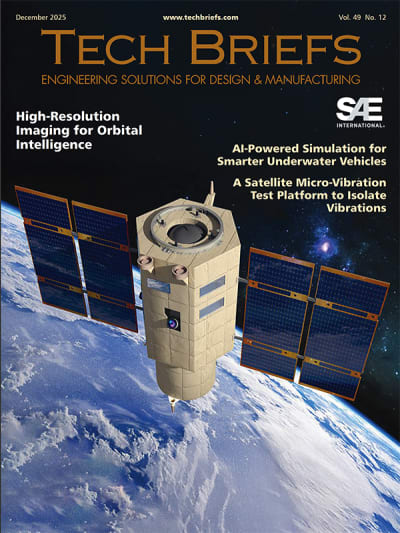
As robots become increasingly accessible and augmented by artificial intelligence, the manufacturing industry is preparing to adapt to this new wave of AI-enabled automation. While AI-driven robotics is driving greater efficiency and productivity, the sector still faces several challenges that need to be addressed. How can manufacturers prepare for this new era of automation? How do they differentiate between hype and reality?
To dig deeper into these questions and address many more related to automation as well as to showcase the latest automation technologies and solutions, the Association for Advancing Automation (A3) is again bringing together professionals from various sectors of the automation industry at its flagship event, Automate 2025. In addition to over 800 exhibitors, this year's event, being held from May 12-15 at the Huntington Place in Detroit, MI, is featuring visionary speakers and industry trailblazers who will share their insights on the future of automation.
Tech Briefs spoke with Ujjwal Kumar, Group President, Teradyne Robotics, an advanced robotics platform including Universal Robots and Mobile Industrial Robots (MiR), who will be presenting the keynote “Tech Hype vs. Industrial Need: Separating Science Fiction from Scalable Solutions” at Automate on Thursday, May 15, 2025. Kumar has a 25-year career spanning multiple industries and major multinational corporations, including General Motors, General Electric, and Honeywell.
Tech Briefs: As robots become more accessible and affordable, the manufacturing industry landscape is shifting. What are the opportunities and risks robotics offers in manufacturing?
Ujjwal Kumar: The manufacturing industry itself is going through stress from multiple directions. We have to attract a new generation of workers, and we have fewer workers than in the past, with the working age population going down in almost every major economy. There are fewer workers, and those workers who are willing to come over have different expectations about how a factory floor should look. The robotics industry — especially advanced robotics, the AI and software-based robotics technologies — can help fix both the problems of how we make the manufacturing floor attractive for a new generation of workers, and how we make the factories cost-competitive so that manufacturers and their investors feel comfortable investing in manufacturing.
There is a big push toward reshoring in the U.S. I recently attended one of the Congressional committee hearings along with the A3 team representing the robotics industry. The biggest challenge for driving reshoring in the U.S. is how to make it attractive. The only way you can bring manufacturing back is to get the workers back and to get the investors back — robotics has the solution for both.

Tech Briefs: For manufacturers looking to automate their production processes, what criteria should be used to assess the real value of new robotic technologies?
Kumar: First, it is the basic ROI — how to make this new generation of robotic technologies more cost-competitive than they were before. But I would go beyond that — robotics also gives them business resilience, as we expect more labor shortages. It gives our manufacturers a factory where they will be able to retain the new generation of workers they want to attract. So, for me it’s a productivity opportunity as well as a business continuity opportunity to run their factories differently than in the past.
Tech Briefs: The integration of AI and robotics is leading to a new generation of intelligent machines that can think and act. What impact is AI-enabled advanced robotics having on the industry?
Kumar: We are at an exciting time for robotics at the start of a new chapter of what we call physical AI, where perception, decision making, and physical execution will be able to take place in real time on the factory floor. So, the core impact, as I see it, is moving from static to adaptive behavior. Number one, AI allows robots to adapt dynamically, not just follow scripts, but to learn from feedback, to improve over time. Number two, in manufacturing that means recognizing various parts, adjusting to structured environments, and learning from real-time feedback to improve performance. Number three is mobile robots, like MiR’s Pallet Jack, which are now using AI to autonomously navigate dynamic customer environments, optime routes, and handle real-world scenarios like broken palettes. AI capabilities are increasing all the time and innovation is being born from collaboration between companies, such as our collaboration with Nvidia.
Tech Briefs: Human-robot Interaction is another area gaining significant traction. What are your thoughts on that?
Kumar: So, 20 years ago, when Universal Robots sold the world's first collaborative robot, it changed the industry. No longer did robots need to be behind cages. As I see it, collaborative robots are now recognized as mainstream technology and found across industries, where they work safely alongside people, augmenting the workforce and freeing people up to do higher value work. So, human-robot interaction, for me, is something which UR started two decades back, and now I'm glad to see that it is getting scaled up to a whole different level.
Tech Briefs: Any time automation enhances efficiency, especially in manufacturing, it also arouses a certain amount of anxiety and fear about the jobs related to it. What’s your advice for manufacturing companies in terms of managing their workforce?
Kumar: We know that robotics creates better workplaces. Robots help remove workers from dirty, dull, and dangerous tasks so that humans can focus on higher-value activities. But, you are right, that there can still be a certain amount of uncertainty among employees and employers. I have a few tips for managing the process. Number one, think about bringing employees with you. Automation is a change-management journey. It can be successful to start small. A Danish customer of ours deployed a robot in their canteen to hand out soft drinks. It was not for efficiency — but to spark curiosity and comfort. Number two, find internal champions. Every successful automation program has someone who grabs the reins and drives adoption because they believe in it. And, lastly, I would say, use automation as an upskilling engine, which gives teams the tools they need, like our basic online training, to engage with the technology. So, those are some of the ways in which we should be able to make the workforce part of this transformation.
Tech Briefs: You are presenting a keynote session at Automate titled “Tech Hype vs. Industrial Need: Separating Science Fiction from Scalable Robotics” on May 15. What can attendees expect to learn from it?
Kumar: I'm very excited to be speaking at Automate and hope as many people as possible will be able to join the event. I'll be primarily talking about the transformational potential of robotics, but as this looks in the real world and in the immediate future. I want to encourage attendees to differentiate between hype and reality, looking first at the true needs of our industry and designing automation around them. Automation has never been as important as it is today. I have been in the industrial and automation space for more than two decades now. I understand what manufacturers are looking for, and we have the technology now to meet those needs. There are far too many companies out there operating without any robots at all or with outdated technologies. That needs to change if we are going to remain competitive and if we want to bring manufacturing back to U.S. For any economies to drive competitiveness and handle their labor shortages, they will need to understand the potential of this new generation of robotic technologies.
Tech Briefs: What do you think is the next big thing in robotics?
Kumar: I see that AI coming into our software stack is helping us drastically decrease the pain with customer adoption. It has also improved the application space of advanced robotics. We have to look at the potential of robotics in a new way with AI coming into our core offering.
This article was written by Chitra Sethi, Editorial Director, SAE Media Group. For more information and to explore more topics and sessions at Automate 2025, see full agenda .

